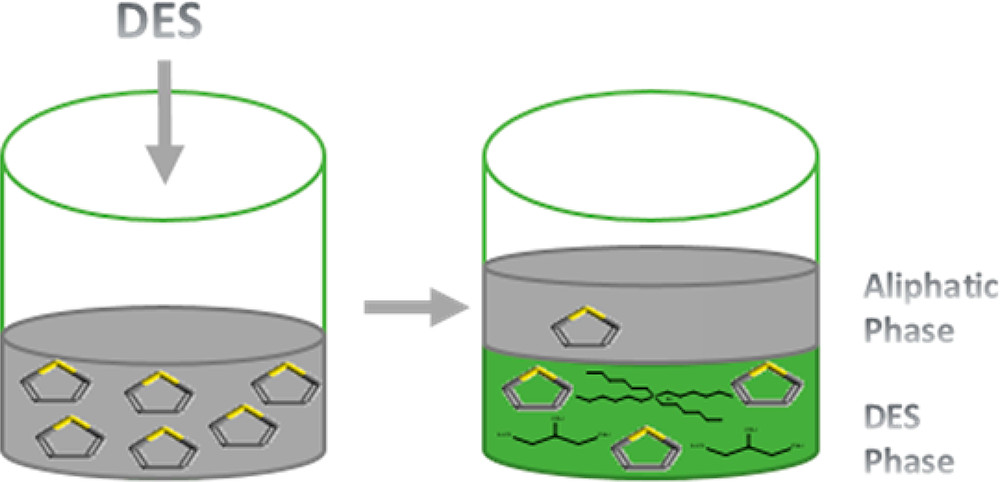J. Chem. Eng. Data 62, 2911-2919
Catalytic hydrodesulfurization is the common process that is used in the industry to achieve low sulfur concentrations in oil fuels. However, it is usually conducted at relatively high pressure and temperature resulting in an expensive and energy-consuming process. Aiming to reduce the energy requirements of this separation, liquid–liquid extraction is considered. In this work, two deep eutectic solvents (DESs) were evaluated for their extraction properties of sulfur derivatives from two aliphatic hydrocarbons via liquid–liquid extraction. The mixtures thiophene/n-hexane and thiophene/n-octane were selected as oil models. The selected DESs were: (i) tetrahexylammonium bromide/ethylene glycol with molar ratio = 1:2 (DES 1) and (ii) tetrahexylammonium bromide/glycerol with molar ratio = 1:2 (DES 2). To confirm the suitability of the DESs for the system {aliphatic + thiophene + DES}, the binary solubility of thiophene/DES and aliphatic/DES was measured at T/K = 298 and atmospheric pressure. Then, the liquid–liquid equilibrium (LLE) data of the ternary systems {n-hexane + thiophene + DES 1}, {n-hexane + thiophene + DES 2}, {n-octane + thiophene + DES 1}, and {n-octane + thiophene + DES 2} were determined at T/K = 298 and atmospheric pressure. The experimental LLE data were correlated using the nonrandom two-liquid thermodynamic model. Also, the solute distribution ratios and the selectivities were calculated from the experimental LLE data and compared to the relevant literature. Finally, the DESs were successfully regenerated by means of vacuum evaporation. It was found that the DESs are potential solvents for extractive desulfurization processes.
